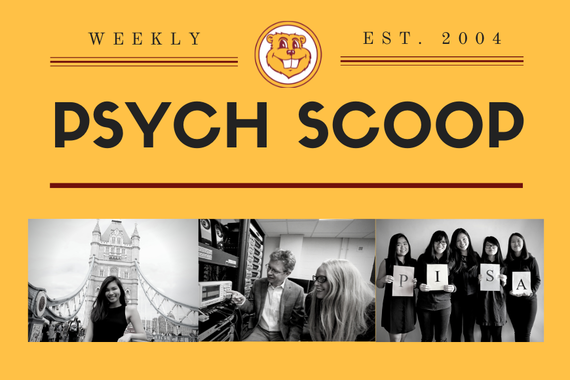Building Pathways from High School to College
This article is the first in a series about the work the Department of Psychology is doing to 'build successful pathways' for all students in moving from secondary school to college, and then onto a career or graduate school. Through our 'building successful pathways' program, we are focused on the recruitment, retention, and matriculation of students of color, first-generation students, and those from high poverty backgrounds. This work has been ongoing in our department and solutions are as varied as the challenges. In this first story, we will explore the connections between high school and college by focusing on one of Psychology's College in the Schools classrooms in Brooklyn Center High School, Brooklyn Center, Minnesota.
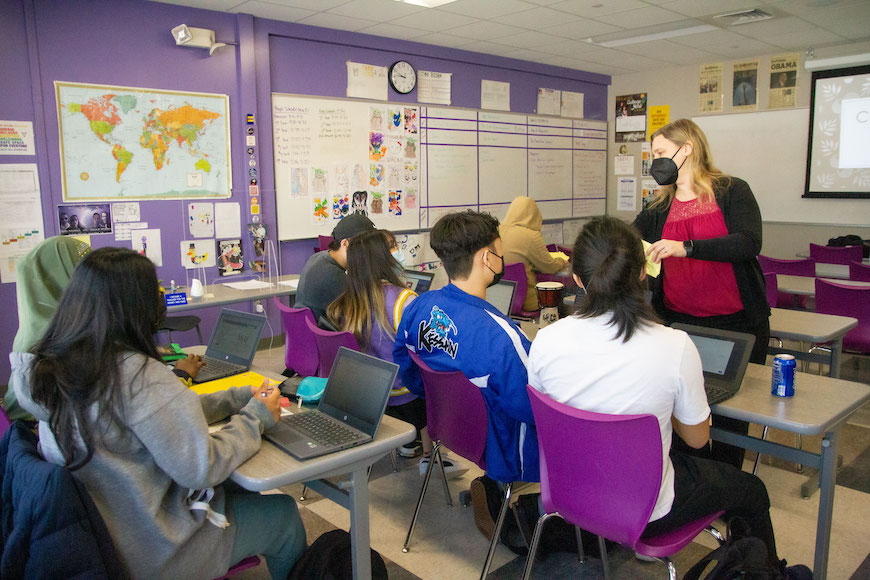
Heather Dodds' Brooklyn Center High School (BCHS) classroom is one of the best places in Minnesota to learn about psychology. Through the College in the Schools (CIS) program, Brooklyn Center students take the same Introduction to Psychology course as the students on the University of Minnesota (UMN) Twin Cities campus—the same lectures, textbooks, and exams. All BCHS students in the course are first-generation, college-bound students from families challenged by poverty and racism, and they are determined to succeed. This semester 12 students are taking the U of M Psychology course—four Latinx, one East-African, and seven Hmong-American students. Part of their success in the course thus far can be attributed to the guidance of Ms. Dodds, the determination and camaraderie of their like-minded peers, and the friendly, cozy BCHS classroom. But their success is primarily self-driven by their desire to push themselves beyond a regular high school experience.
Ms. Dodds has been teaching Introduction to Psychology (Psych 1001) at BCHS through the UMN College in the Schools (CIS) program since 2018. CIS is a dual-enrollment program via which high school students who successfully complete the class earn high school and college credit for the course. U of M courses are taught by high school teachers who have been endorsed and trained by college faculty for a particular course. Charles Fletcher is the U of M Psychology professor in charge of the U of M Psychology course through CIS at 15 Minnesota high schools. Ms. Dodds has been a social sciences teacher at BCHS since 2003. During that time, she has taught political science, sociology, psychology, and seven other subjects. Ms. Dodds herself graduated from the University of Minnesota with a BA ('02) in political science and history and a MA ('07) in teaching.
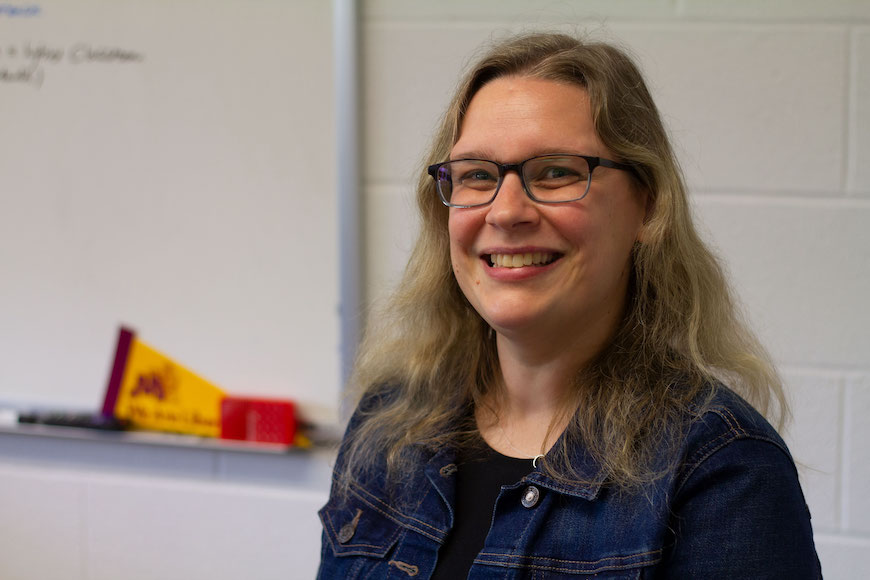
Ms. Dodds describes U of M Psych 1001 as being fast-paced with lots of information, yet concepts are explored in-depth. She makes sure her students understand that they will need to do six to nine hours of work per week outside of class to keep up with the course material. U of M Psych 1001 requires students to absorb over 40 lectures from several of the top researchers in the field who are senior faculty members in the Department of Psychology at the University of Minnesota. BCHS students use the same online learning environment as UMN students, they follow the same textbook, and they take the same exams. Aside from helping her students navigate the content, Ms. Dodds also helps them with time management and is their full-time cheerleader, supporting them as they advance their educational and career skills and knowledge. As the BCHS students engage with college work, Ms. Dodds provides them with expert guidance and scaffolding to help them be successful.
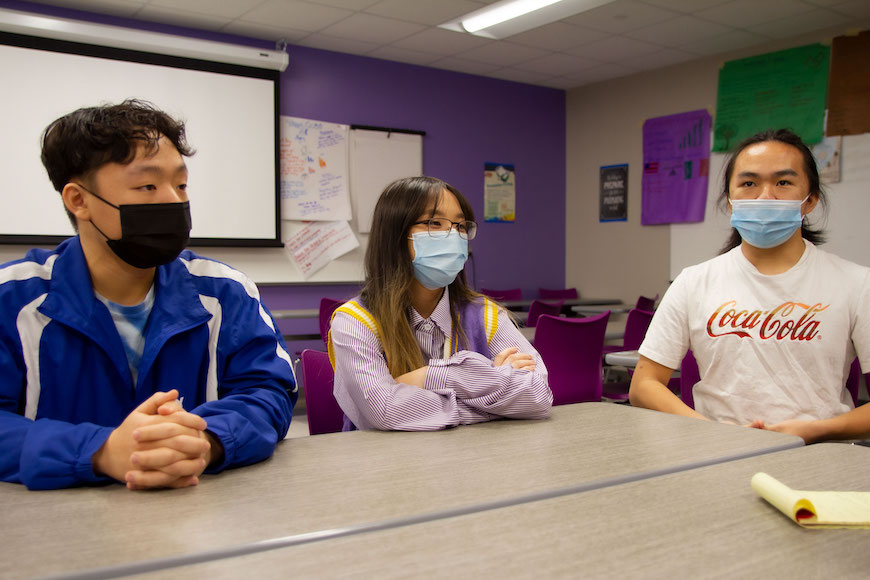
Across the board, the primary reason Brooklyn Center students take the course is because it is challenging—fast-paced, full of scientific vocabulary and complex material—and there is a lot of it. Three BCHS students shared their thoughts on CIS, the University, and their dreams for the future.
- Nicky Yang (on the left) will be at the University of Minnesota Twin Cities in fall 2022 and he wants to be prepared. Nicky likes that the University is a Big 10 school, especially the Division 1 Gopher teams. Nicky sees the UMN as a big institution with a lot of resources and he plans to self-advocate to obtain the support he needs to be successful. Nicky describes himself as an ambitious, goal-oriented individual and he knows that his drive and willingness to seek help will lead to success.
- Caitlin Khang (in the middle) is the middle child in a large family: four older and two younger brothers plus three younger sisters. Her older brothers, students at the University of Minnesota, tell her that "college is supposed to be hard" and that she will need "to fight your way to get help." Caitlin took U of M Psychology through CIS because she is interested in it as a major. She would like to be a therapist or perhaps a doctor. Caitlin also took the course because she wanted the challenge while also being able to take it alongside her friends. "Just a taste of reality" before college itself.
- David Ly (on the right) "Psychology is interesting, I like to figure out ideology, and I wanted a challenge." David noted that this U of M course through CIS is his only perspective on the University of Minnesota. He knows college will be challenging and he will need to manage his time carefully. David is in the process of deciding what to do after high school.
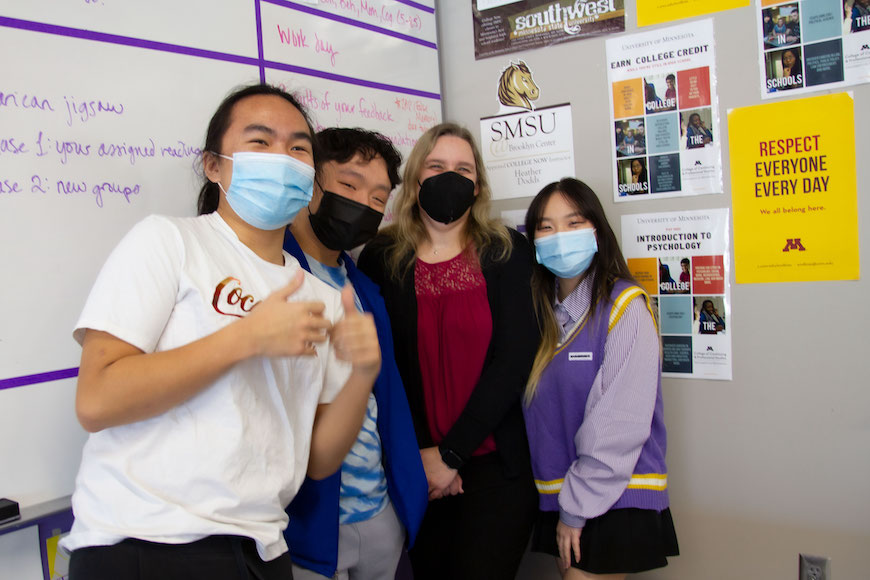
BCHS is one of the best places in Minnesota to learn about psychology because of the strong and supportive relationships between Ms. Dodds and her students, because of the high expectations set by CIS, and because of the rigorous material covered in the UMN Twin Cities Introductory course. Concurrent-enrollment programs like CIS have proven to improve college-going and college completion rates significantly for all students. Over 40% of Minnesota high school students participate in concurrent enrollment opportunities, such as CIS. This program has also been proven to be a significant, yet under-utilized, lever for equity, improving educational outcomes for students from high-poverty backgrounds.
Caitlin, David, and Nicky all agree that Ms. Dodds, their friends, and the materials from UMN have made this a challenging and, ultimately, successful opportunity. They were also aware of the fact that the course was "a little like a discount" for them as the four credits they earned to complete their high school degree were also—concurrently—counted as four credits toward their college degree.
If you are interested in offering CIS sections of Psychology 1001 at your high school, please see the U of M CIS website. The State of Minnesota, through the PSEO Act, provides a prorated reimbursement to public high schools for their students' participation. High schools support the nominal fee and provide textbooks, technology, and instruction as part of the CIS partnership.

